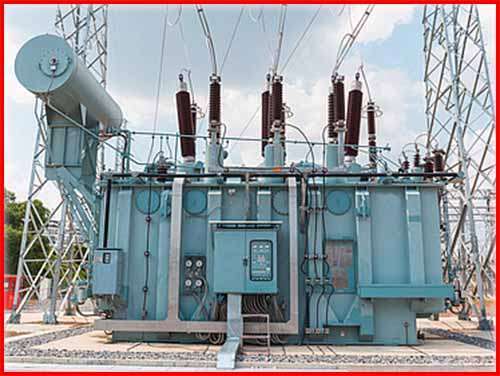Power Transformer Testing: Important Types, Routine Tests & Special Tests
Power transformers, the backbone of electrical systems, undergo meticulous testing to ensure their specifications and performance standards are met. These tests are conducted both at the manufacturer’s premises and at the consumer’s site, with periodic assessments throughout the transformer’s service life.
Table of Contents
Table of Contents

These evaluations guarantee consistent functionality and performance. Power transformer testing is an indispensable phase in the life cycle of these critical electrical components. Ensuring the seamless operation of power transformers is paramount, given their pivotal role in transmitting electricity across networks.
Comprehensive power transformer testing is conducted at various stages, encompassing both factory assessments and on-site evaluations. These tests, which include power transformer testing, serve to validate design specifications, guarantee operational reliability, and monitor the transformer’s health over time.
Power Transformer Testing
They are instrumental in mitigating potential risks, optimizing performance, and extending the operational lifespan of power transformers. Let’s explore the comprehensive landscape of power transformer testing, focusing on the various types of tests, their significance, and the methods employed.
Types of Power Transformer Tests
Tests at the Manufacturer’s Premises
1. Type Tests
Type tests provide a comprehensive evaluation of a transformer’s design and confirm that it aligns with consumer specifications. They are performed on prototype units and verify critical design criteria. These tests include:
Measurement of Insulation Resistance: Conducted to ensure proper insulation between winding phases and between windings and the ground.
Vacuum Test of Tank and Radiators: Checks the vacuum integrity of the transformer’s tank and radiators, crucial for preventing leaks and maintaining insulation.
2. Routine Tests
Routine tests are conducted on every manufactured unit to validate operational performance. These tests include:
Winding Resistance Test: Measures the resistance of transformer windings to calculate I2R losses. This test is essential for evaluating efficiency.
Transformer Vector Group Test: Determines the arrangement of primary and secondary windings for correct phasing and voltage levels.
3. Special Tests
Tailored to customer requirements, special tests offer insights for optimal operation and maintenance. These include:
Dielectric Test: Evaluates insulation strength by applying high-voltage potential across different windings and monitoring any breakdown.
Measurement of Acoustic Noise Level: Assesses the noise generated during transformer operation to ensure it’s within acceptable limits.
Measurement of No-Load Current Harmonics: Measures harmonic content in the no-load current to analyze transformer health.
Tests at the Consumer’s Site
1. Pre-commissioning Tests
Pre-commissioning tests prepare the transformer for operation and include:
Insulation Resistance Test: Ensures proper insulation before the transformer becomes part of the operational network.
Dielectric Test: Confirms the insulation strength under operational conditions.
2. Periodic Tests
Periodic tests maintain the transformer’s reliability throughout its service life and involve:
Routine Tests: Repeated to ensure continued operational performance.
Dielectric Test: Regular assessments of insulation strength to prevent degradation.
Measurement of No-Load Current Harmonics: Monitors harmonic levels over time to detect any abnormal changes.
3. Emergency Tests
Triggered during unforeseen events, emergency tests involve:
Short-Circuit Test: Simulates short-circuit conditions to assess the transformer’s response under stress.
Measurement of Core Losses: Determines core losses under emergency load conditions.
Power Transformer Test Methods
1. Winding Resistance Tests
Various methods are used for accurate measurement, including:
- Ammeter-Voltmeter Method: Measures voltage and current to calculate resistance.
- Bridge Method: Utilizes a Wheatstone bridge circuit for precise resistance measurement.
- Kelvin Bridge Method: Minimizes lead resistance effects for more accurate results.
- Automatic Winding Resistance Measurement Kit: Streamlines the process with automation and accuracy.
2. Transformation Ratio Test
This test employs a 3-phase 415V supply on the high-voltage winding and measures the induced voltage to determine the transformation ratio. The open-circuited low-voltage winding prevents load effects.
3. Insulation Resistance Test
Conducted using a megger, insulation resistance tests involve measuring resistance between different windings and terminals:
- LV-HV Bushing Studs: Measures insulation between low-voltage and high-voltage windings.
- HV Bushing Stud-Earth Terminal: Measures insulation between high-voltage winding and earth.
- LV Bushing Stud-Earth Terminal: Measures insulation between low-voltage winding and earth.
4. Dielectric Test
The dielectric test comprises multiple steps to ensure insulation strength:
- Separate Source Voltage Withstand Test: Applies a single-phase voltage to test insulation resilience.
- Induced Voltage Test: Subjects the transformer to elevated voltage levels to verify insulation integrity.
5. Temperature Rise Test
This test uses WTI and OTI meters to monitor winding and oil temperatures during operation. It ensures that the transformer remains within specified temperature limits, preventing overheating and damage.
At the heart of power transformer testing lies the commitment to meeting industry standards and ensuring the safe and efficient functioning of power transformers. Power transformer Manufacturers subject transformers to a series of power transformer testing processes that encompass the entire spectrum of possible operating conditions, from routine scenarios to emergency situations.
This power transformer testing is done during the manufacturing phase but also during pre-commissioning and throughout the transformer’s service life. Such a rigorous approach to power transformer testing addresses issues ranging from insulation integrity and winding resistance to temperature tolerance and core losses.
Worth Read Posts
Follow Us on Social:
Subscribe our Newsletter on Electrical Insights to get the latest updates in Electrical Engineering.
#PowerTransformerTesting, #TransformerMaintenance, #ElectricalTesting, #HVTesting, #TransformerDiagnostics, #SubstationTesting, #PowerSystemReliability, #TransformerHealthCheck, #PreventiveMaintenance, #HighVoltageTesting, #TransformerInspection, #ElectricalSafety, #TransformerCommissioning, #GridReliability, #PowerEquipmentTesting
